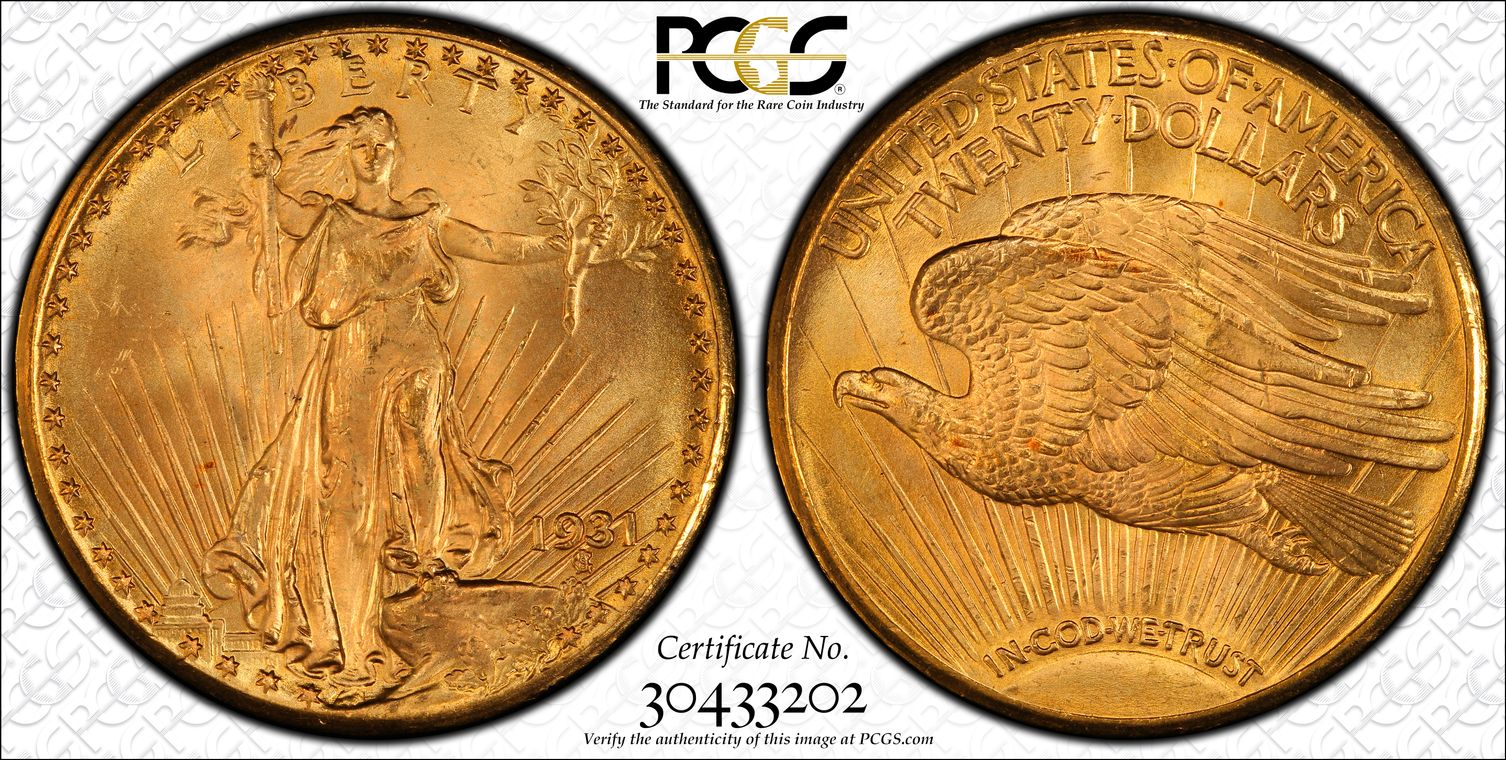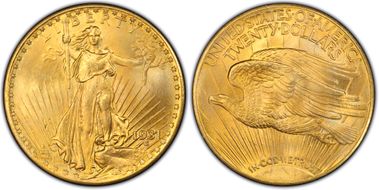1931 $20 MS65 认证号30433202, PCGS号9192
专家评论
Ron Guth
How well have David Akers' observations held up since he last wrote about this series in 1988? Let's take a look at the PCGS Population Report to see if the ranking of the 1931 has changed.
In terms of total population, the later-date Saints rank as follows (largest population to smallest): 1929, 1931-D, 1932, 1931, and 1930-S. This represents no change at all in the ranking proposed by Akers, attesting to the continuing value of his work.
If one looks at the populations of Gem examples (MS65 and better) of each date, the most "common" is the 1932, followed in order by 1931, 1929, 1931-D, and 1930-S. Here again, Akers pegged it right on, depending on how you read his narrative (see below).
The only change we would make today, and it is a minor one, is that the collector is more likely to find an MS64 or an MS65 example on the market, representing a slight, upward shift in Akers' expectations. The 1931 is a very rare coin but, when found, it is usually nice.
David Akers (1975/88)
Among the late date rarities (1929 to 1932) of the Saint-Gaudens series, the 1931 is probably the one with the least clearly defined relative rarity ranking. Some numismatists, myself included, rank it second in overall population rarity only to the 1930-S and place it a step ahead of either the 1932 or the 1931-D and, of course, the 1929. Others rate it less highly and feel that the 1931 is more rare than the 1929, but less rare than the other three issues. I can only say that I have seen more of the 1931-D and 1932 than I have of the 1931 but, of course, others' experience may differ. In true gem condition, however, I think the 1931 is definitely less rare than the 1930-S and 1931-D and even the oft-maligned 1929, but there are more gems in existence of the 1932 than there are of the 1931. The population of this issue seems to be evenly distibuted across the Mint State grades from MS-60 to MS-65, and one is as likely to find a true gem as, say, an MS-63 piece. A few superb examples of this issue exist with the Auction '80 - Auction '84 example as nice as any I have seen.
The 1931 is usually very sharply struck, although some examples have rather flat stars below the Capitol building. The surfaces are always very frosty and the lustre and color are generally very good, if not quite the equal of the 1932. Some specimens have a long, vertical, slightly curved die break running through the eagle's beak. The color on nearly all specimens I have seen has been a light to medium orange or coppery gold, but I have also seen a very few that were a deep yellow gold color with a light greenish tint. Copper spots or stains are common.
稀有性和存量估计 了解更多
| 所有评级 | 127 |
| 60或以上 | 120 |
| 65或以上 | 55 |
| 所有评级 | R-7.7 |
| 60或以上 | R-7.8 |
| 65或以上 | R-8.4 |
| 所有评级 | 5 / 49 |
| 60或以上 | 7 / 49 |
| 65或以上 | 22 / 49 TIE |
| 所有评级 | 5 / 54 |
| 60或以上 | 7 / 54 |
| 65或以上 | 22 / 54 TIE |
























